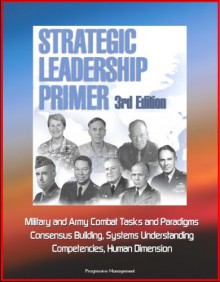Strategic Leadership Primer, 3rd Edition - Military and Army Combat Tasks and Paradigms, Consensus Building, Systems Understanding, Competencies, Human Dimension
This is the third edition of the landmark U.S. Army War College primer. At the turn of the 21st Century, discussions about the realities of military conflict in the Information Age have addressed the concept of the "Strategic Corporal," claiming that the mandates of strategic leadership now have...
show more
This is the third edition of the landmark U.S. Army War College primer. At the turn of the 21st Century, discussions about the realities of military conflict in the Information Age have addressed the concept of the "Strategic Corporal," claiming that the mandates of strategic leadership now have the potential to extend to the lowest levels of military organizations—asserting that the most junior member's actions can have strategic impact and implications. This Primer asserts that this is very different from exercising strategic leadership yet, more than ever, every level of the organization must appreciate its responsibilities, functions and impacts at the strategic level. To accommodate this multi-level awareness requirement, strategic leaders have a responsibility to spread knowledge and values throughout their organizations by clearly communicating a vision, shaping climate, influencing culture, coaching, mentoring, teaching, and exemplifying appropriate behaviors. So what is strategic leadership? The USAWC has traditionally defined strategic leadership as: The process used by a leader to affect the achievement of a desirable and clearly understood vision by influencing the organizational culture, allocating resources, directing through policy and directive, and building consensus within a volatile, uncertain, complex, and ambiguous global environment which is marked by opportunities and threats.
Concepts covered include: frame of reference development, systems understanding, consensus building, decisionmaking paradigms, strategic leadership tasks, various models: rational, bounded-rationality, incremental, mixed-scanning, polis, garbage can, bargaining, participative.
Chapter 1. Introduction * Chapter 2. The Strategic Leadership Environment * Chapter 3. Vision * Chapter 4. Strategic Leader Competencies * Chapter 5. Strategic Decision Making Paradigms * Chapter 6. Strategic Leadership Tasks * Chapter 7. The Strategic Leader and the Human Dimension of Combat
show less

